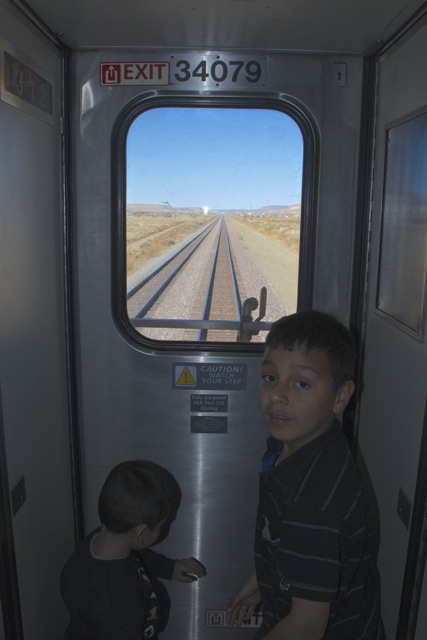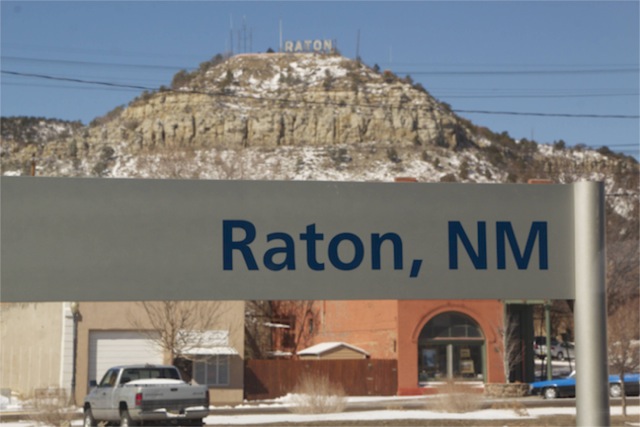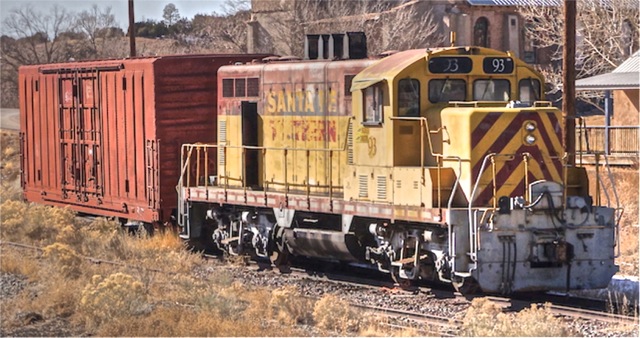

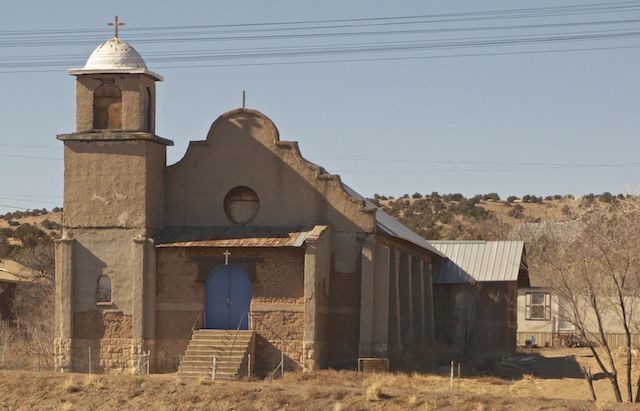

In Albuquerque Cafe Car Attendant, Tom Anderson,
and my traveling companion, Tom Anderson, had time to chat. Tom
Anderson, Cafe Car Attendant, has the highest seniority of every Amtrak
onboard job except waiter.
Mealtime in the Diner is a very good place where you can meet new
people and a writer like me can pick up some interesting life
stories. However, the LSA on this westbound leg of the trip
usually seated only me and Tom in a booth, perhaps because we are both
over 6 feet tall, so not many new acquaintances were made. If you
are traveling in a party of 4, I would suggest going to meals as two
twos so you will meet new folks on your trip.
The Sightseer/Lounge is also a good place to meet fellow
travelers. The upper level is half cushioned seats facing the
side windows, and half is tables for 4. Each table has 2
electrical plugs if you have equipment that needs charging while you
are there. In the past, there was one plug in the whole upstairs,
perhaps for a vacuum cleaner at trip's end. In the center of the
car, there is a set of stairs for access to the lower level Cafe.
This cafe is the only other alternative for food and drinks other than
the Diner. Many travelers miss the Cafe because it is on this
lower level accessible only from the Sightseer/Lounge Car. I find
that it is hard to see the screen on a laptop during the day in the
Sightseer/Lounge because of all the light from the big high
windows. I usually return to my roomette to work on my laptop
during the day. However, after dark, I like to use my laptop with
research materials at a table in the Sightseer/Lounge Car.
Another place for conversations is at Crew Change stations (Chicago, Kansas City, La Junta, Albuquerque, Kingman, and Los Angeles).
Since we were about an hour early into Albuquerque, giving plenty
of time for a passenger to ask Chuck, our car attendant, what the
different cars were on the train. He explained that behind the
locomotives, there are, in this order:
Baggage, Transition* (Crew) car, 2 Sleepers, the Diner, Lounge/Sightseer car, and 2 coach cars.
*[The Transition Car allows crew to 'transition' from the upper level route through the train to the low-level baggage car.]
Our Conductor from La Junta to Albuquerque was congenial and spent his time walking the train talking with continuing and new passengers, until
the replacement crew came at their appointed time. Tom Anderson, the Cafe Car
Attendant, and Chuck, our Sleeper Car Attendant, talked with passengers
as well.
Albuquerque is a good place to make cell phone calls as well. On
both sides of ABQ cell service is spotty, but in town, during the stop,
there is excellent service.
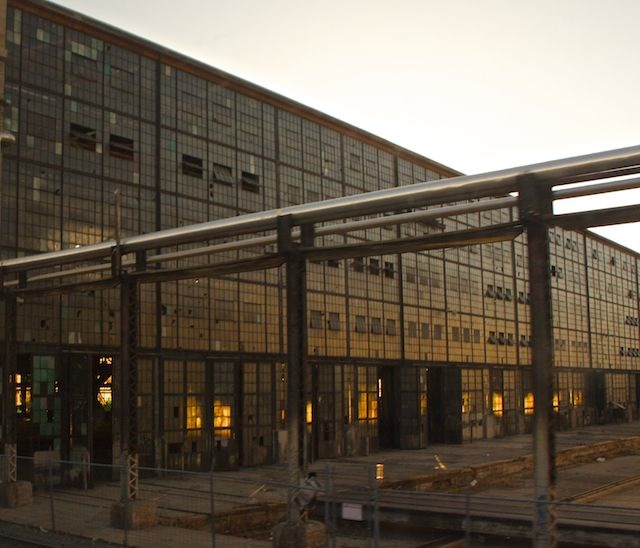
The sun was setting on this
February afternoon as we pulled out of Albuquerque heading west.
I liked the light through this giant abandoned railroad workshop along the tracks.


Tom had been chilling a bottle of
his 'Carls-Not-So-Bad' White Zinfandel in a bucket of ice that Chuck had given us, so we felt it was the appropriate
time to have some before dinner call.
The only place you can consume alcohol you bring on the train is in
your own accommodations. Beer and wine are available for purchase
and consumption in the Cafe Car, however. Also, wine and beer are
available for purchase with your meal in the Diner.
 We both enjoyed the passing red rocks as we made tracks
westward. The horse trailer and other vehicles give a sense of
scale to the hills.
We both enjoyed the passing red rocks as we made tracks
westward. The horse trailer and other vehicles give a sense of
scale to the hills.
 I call this formation right outside our window, "Elephant Toes".
I call this formation right outside our window, "Elephant Toes".

Can you imagine how many years that
this section of the world was under water to accumulate this much silt,
and how many more years to wear down the rest of the area for these now
to be mountains?
Dinner at 6:30 was salad followed by herb-roasted half chicken with
rice, vegetables and milk to drink. Mango sorbet for desert (30
calories less than ice cream).
Another good night's sleep followed with me in the lower bunk and Tom in "Coffin Class" (the upper bunk in a roomette).
Breakfast coming into Los Angeles was from 5 a.m. to 5:30 a.m.
Ridiculously early, in my opinion, since the train is not scheduled
into LA until 8:15 a.m.
Amtrak is the only place I know where your room is stripped BEFORE checkout time at the end of the trip.
The only reason for the abbreviated,
unnecessarily early breakfast, and having to drag luggage around car
attendants trying to strip beds is, in my mind, so that the employees can jump
directly off the train and go home. Shouldn't this policy be
changed so that those spending thousands of points or dollars for
accommodations on an Amtrak train be treated like a hotel guest who is
not encumbered by housekeeping cleaning up their room before checkout
time?
As we were getting ready to detrain in Fullerton, Conductor Dave Arthur
came by and took a few minutes to chat. He and his family plan a
trip to Kansas in the Fall, so I suggested that he spend some time at
the Depot Inn & Suites in La Plata, Missouri, and see some of the
Silver Rails Country attractions (another section of this
report). I gave him a map of Silver Rails Country. You can
also get a free map by signing up for their newsletter at
silverrailscountry.com/
My friend, Preacher Roe, welcomed me at the Santa Fe Cafe at the
Fullerton Station at this early-morning arrival. There Anna and Jose fixed me an excellent,
unrushed breakfast. Don delivered me to my doorstep in Placentia,
some 20 minutes away.
The trip to La Plata had been uneventful, which is good. We had
seen about 1,900 miles of winter wonderland in California, Arizona, New
Mexico, Colorado, Kansas, and Missouri, twice on this round trip from
Fullerton, California, to La Plata, Missouri's Silver Rails
Country.
While we were traveling westward, airports along the way had been
closed because of a second 6-12 inch snowfall during our trip.
The Organizational Meeting of the American Passenger Rail Heritage
Foundation in La Plata, Missouri, was a big success as well.
Please follow the link below to my report on the APRHF Organizational
Meeting.






